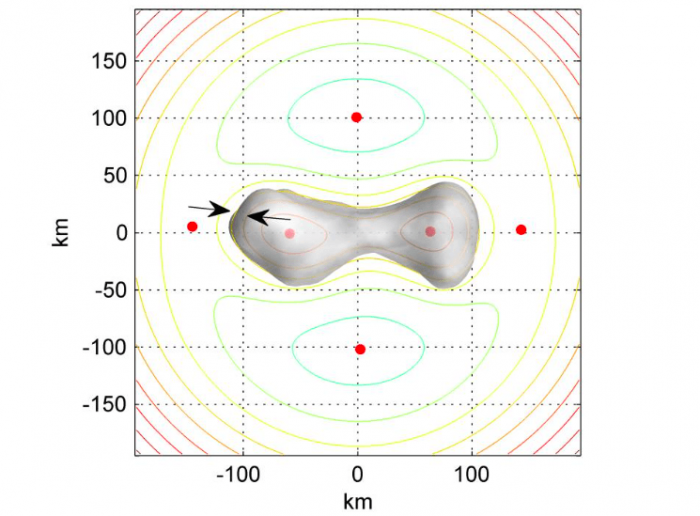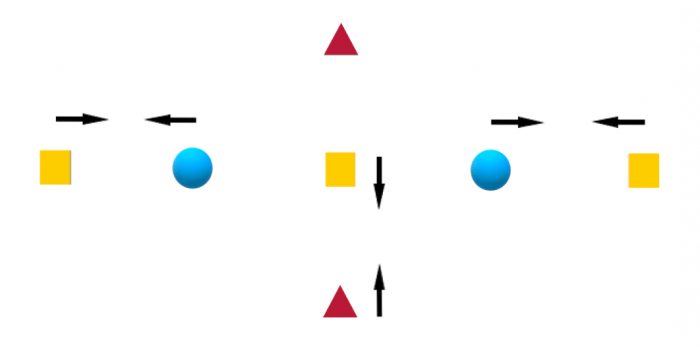
Relative equilibria of asteroids, comets, and satellites of planets are important dynamical characteristic around these minor celestial bodies. Most minor celestial bodies are uniformly rotating, and their relative equilibria remain static when seeing them on the surface of bodies. Previous literature found that the number of relative equilibria in the potential of minor celestial bodies may be 1, 5, 7, 9. Most of the minor celestial bodies have 5 relative equilibria.
However, due to the YORP (Yarkovsky-O’Keefe-Radzievskii- Paddack) effect, rotational speeds of minor celestial bodies may vary obviously for a long time. The YORP effect is caused by the electromagnetic radiation of the Sun acting on the surface of minor celestial bodies. For instance, the YORP effect makes the spin rate of asteroid (54509) YORP become twice as fast as it now is after 600,000 years.
During the variety of rotational speed, the location and number of relative equilibria will change. Yu Jiang and Hexi Baoyin developed a classification system of multiple annihilation behaviors for relative equilibria in the potential of minor celestial bodies. The annihilation process of two relative equilibrium points includes: 1) two relative equilibrium points approach each other; 2) two relative equilibrium points are collided and become to one degenerate relative equilibrium point; 3) the degenerate relative equilibrium point disappears.
There are two kinds of relative equilibria: non-degenerate or degenerate. In general, all the relative equilibria are non-degenerate. Degenerate relative equilibria may suddenly annihilate and then suddenly create due to the variety of parameters.

Credit: Yu Jiang

Credit: Yu Jiang
The classification system includes annihilation classifications for equilibria of objects with five, seven, and nine equilibrium points, which is suitable for asteroids, comets, and satellites of planets. During the variety of rotational speed, the annihilation and creation processes for 216 Kleopatra, 243 Ida, 951 Gaspra, 1620 Geographos, 2063 Bacchus, 2867 Steins, 6489 Golevka, and 101955 Bennu, comet 1682 Q1/Halley, as well as satellite of the planet S16 Prometheus are calculated and their annihilation classifications have been found.
A quite strange finding is that 44% of annihilation and creations occur on the surface of minor celestial bodies. In other words, there exists a link between an equilibrium which touches the surface and annihilation and creation of equilibria. Which also implies when the annihilation and creation occur on the surface, two equilibrium points in the gravitational field and two surface equilibrium points collide to one degenerate equilibrium or create from one degenerate equilibrium, or two equilibrium points in the gravitational field and one degenerate surface equilibrium collide or create. This phenomenon can be found in asteroid 216 Kleopatra, 243 Ida, 951 Gaspra, 2867 Steins, etc.

Credit: Yu Jiang
These findings are described in the article entitled Annihilation of relative equilibria in the gravitational field of irregular-shaped minor celestial bodies, recently published in the journal Planetary and Space Science. This work was conducted by Yu Jiang and Hexi Baoyin from Xi’an Satellite Control Center and Tsinghua University.









